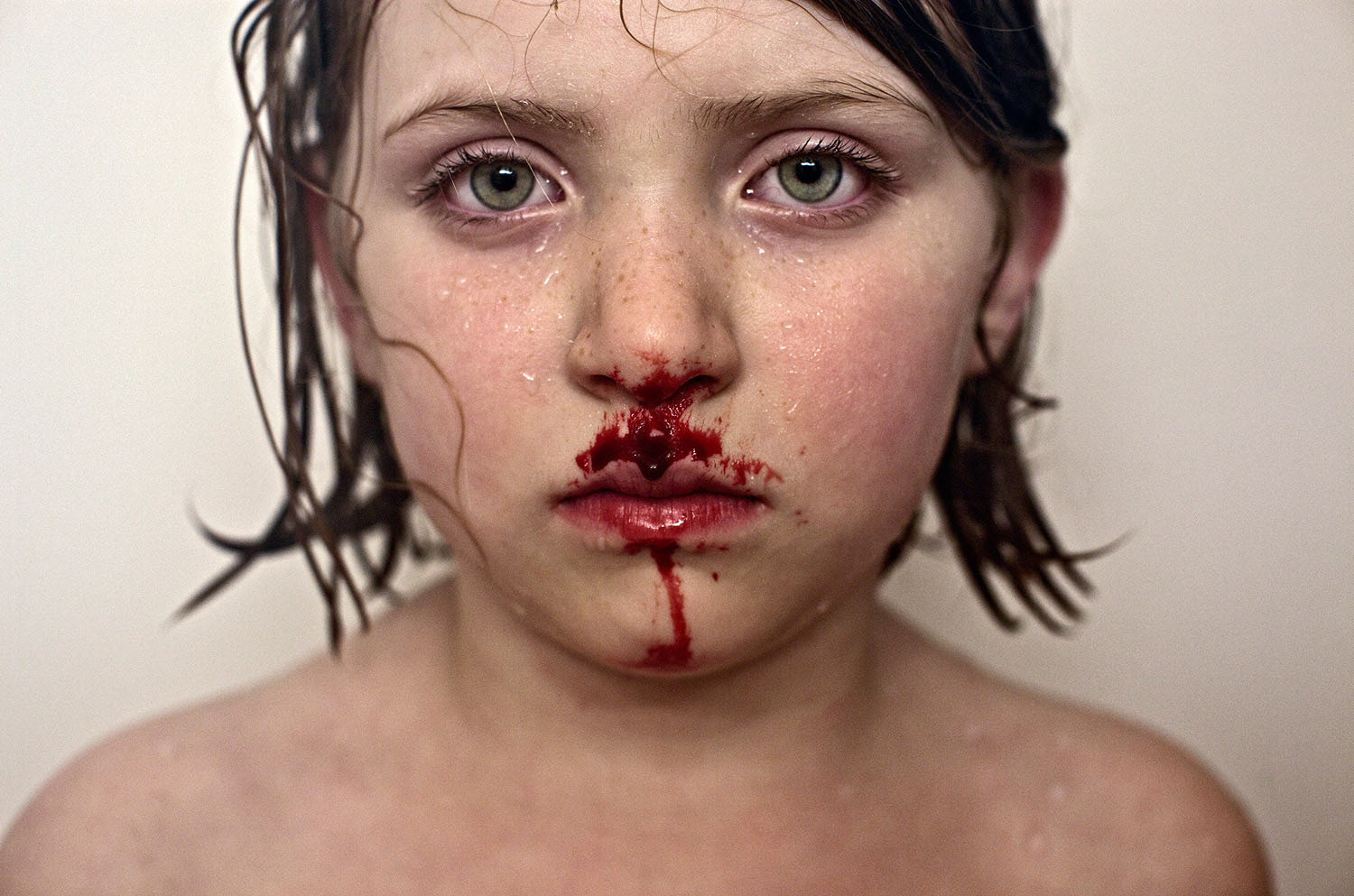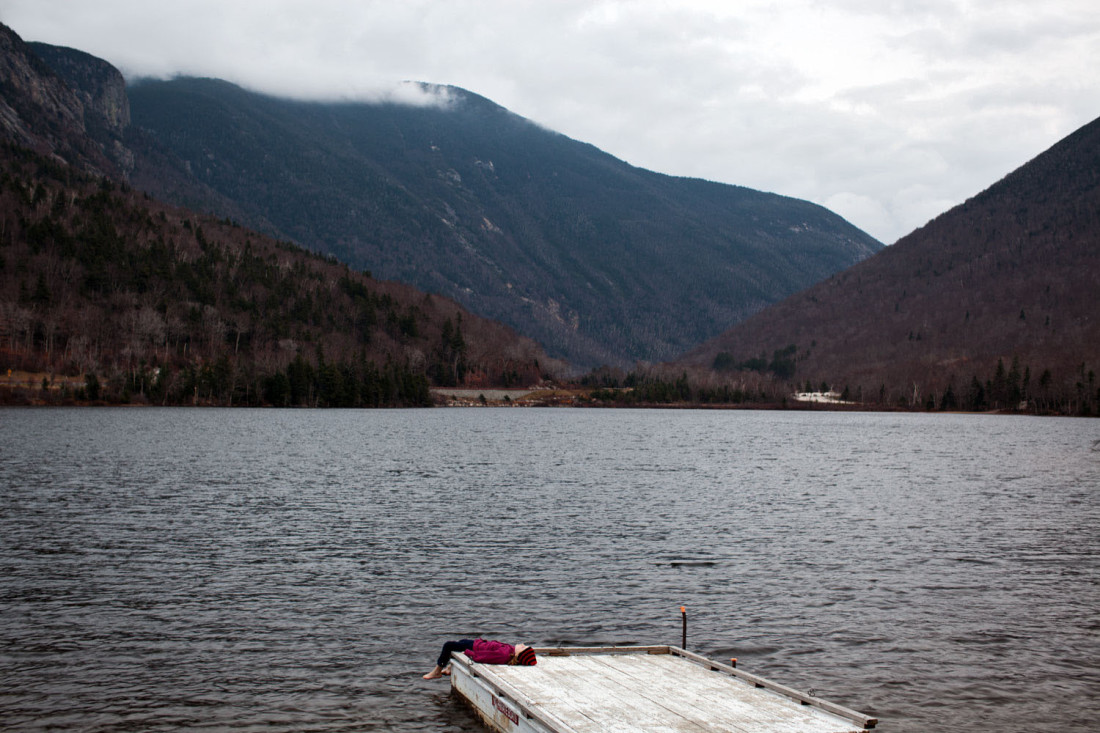
Jesse Burke is not only the newest member of our Childhood Unplugged group, he’s also the author of “Wild & Precious”, a collection of images he’s shot of his daughters in nature over the last few years. He’s tremendously talented, has a clever vision, and it’s my honor to introduce you to both him and his work. With no further adieu…
Perhaps we should start off with a general introduction. Tell us where you’re from and three things about yourself.
I’m from Stratford, Connecticut but I consider myself a New Englander at large. I spent many days, weeks, months traveling around all of my life. We live in Rhode Island these days.
Things about me:
I’m a huge, nature nerd. I take my family, which is comprised of my three daughters, Clover Lee, Poppy Dee, and Honey Bee, and my wife Kerry, out and explore nature a couple times a week. I think it’s so important for them to be physically in touch with the natural world.
I spent most of my life as a skateboarder. This may not seem like a major thing but it as truly shaped who I am as a person and parent.
In addition to being a photographer I also teach at Rhode Island school night. I went there for school and feel a deep need to stay connected to academia and help students become awesome artists.
I notice you shoot a lot of commercial work but I’ll bet your heart lies in your personal work, which I feel like is common for many photographers. Give us a brief synopsis about your personal project, Wild & Precious.
Wild & Precious documents the road trips I embark on with my daughters in order to get them intimately connected to the natural world. It also serves as a love story between father and daughter, man and nature and children and nature. It shows all of the adventures we have on the road, where we sleep, what we eat, and the objects and animals we come in contact with.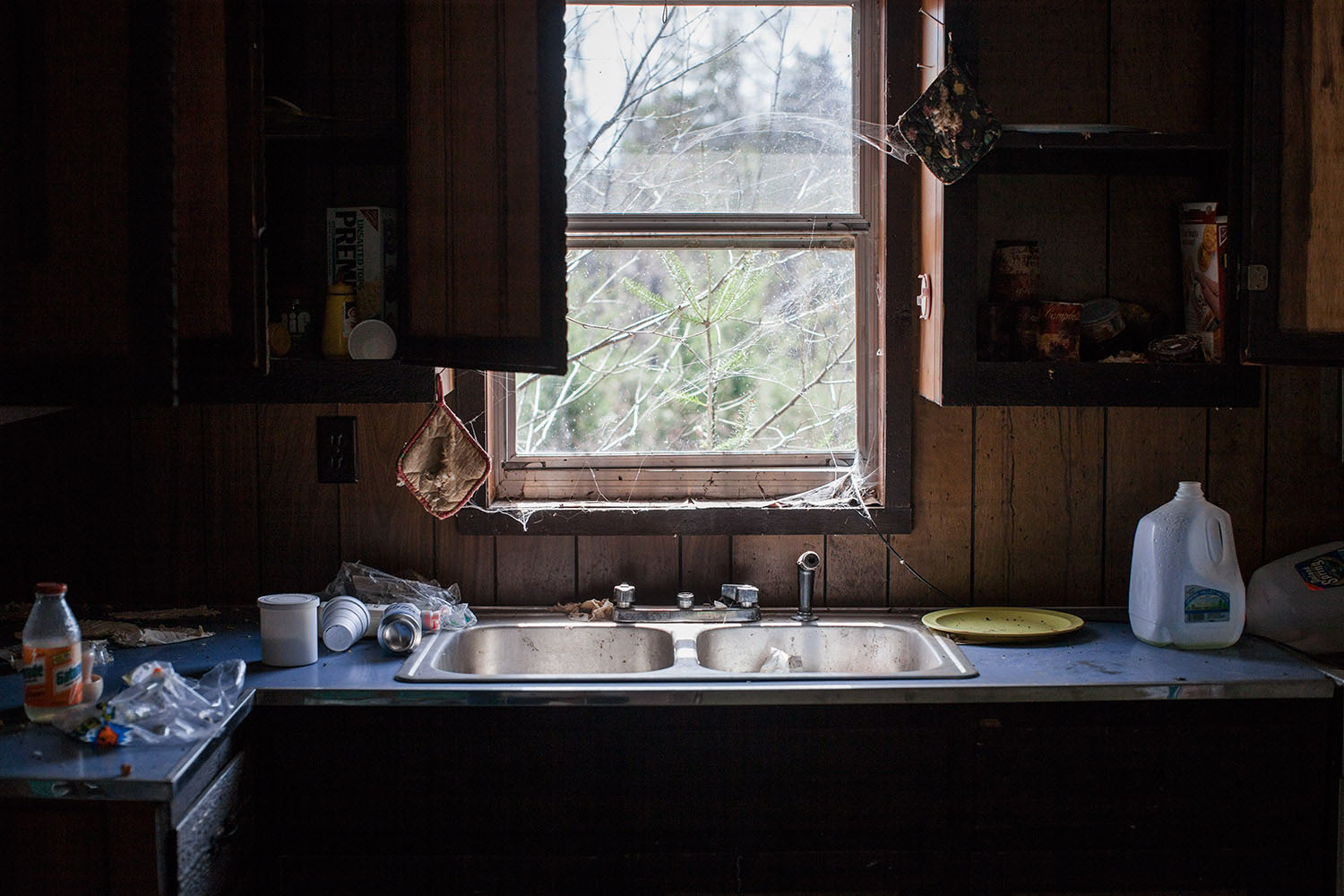 Maybe this is too personal, but I’m curious about your own upbringing. Did the way you were personally raised play a direct role in how you are in-turn raising your girls?
Maybe this is too personal, but I’m curious about your own upbringing. Did the way you were personally raised play a direct role in how you are in-turn raising your girls?
I think as parents we take the things we think worked from our own upbringing and push them forward onto our children and we discard the things we don’t think worked very well. I find myself taking a few of the things that happened between my parents and I and utilizing them but I’m really trying to do something different than what my parents did. I’m in a very different situation than they were. My career affords me the opportunity to spend a lot of time with my children and include them in my artwork which really is a magical opportunity.
To teach about nature you too must know the ins and outs. Is this something you tackled as an adult or grew up learning from someone else? What kinds of things, in regards to life or nature, do you make a point to teach your daughter, Clover?
As a child I spent a lot of time outside in the woods. I became very familiar with the indigenous species where I lived, which wasn’t all that rural. So I guess you can say I am self taught. When I moved back to New England after college and started my first real art project I got very invested in the landscape of the natural world of New England. I took it upon myself to really learn about animals and nature. This has of course parlayed into me teaching my children about that, as seen in my Wild & Precious project. The two things that I really try to instill in my children are compassion and love towards creatures and the earth in general. We’re all ethical vegetarians, so in a simple way they understand the dynamic there and why we make the choices we make. One of the most important things to me is that my children feel a connection to the earth and the animals that inhabit the same space that we do. I don’t want them to be afraid of animals so I’m go out of my way to teach them about the creatures and how they should interact with them. It’s quite amazing to see the babies not afraid of spiders or bees. We have a beehive in our yard and they have zero concern.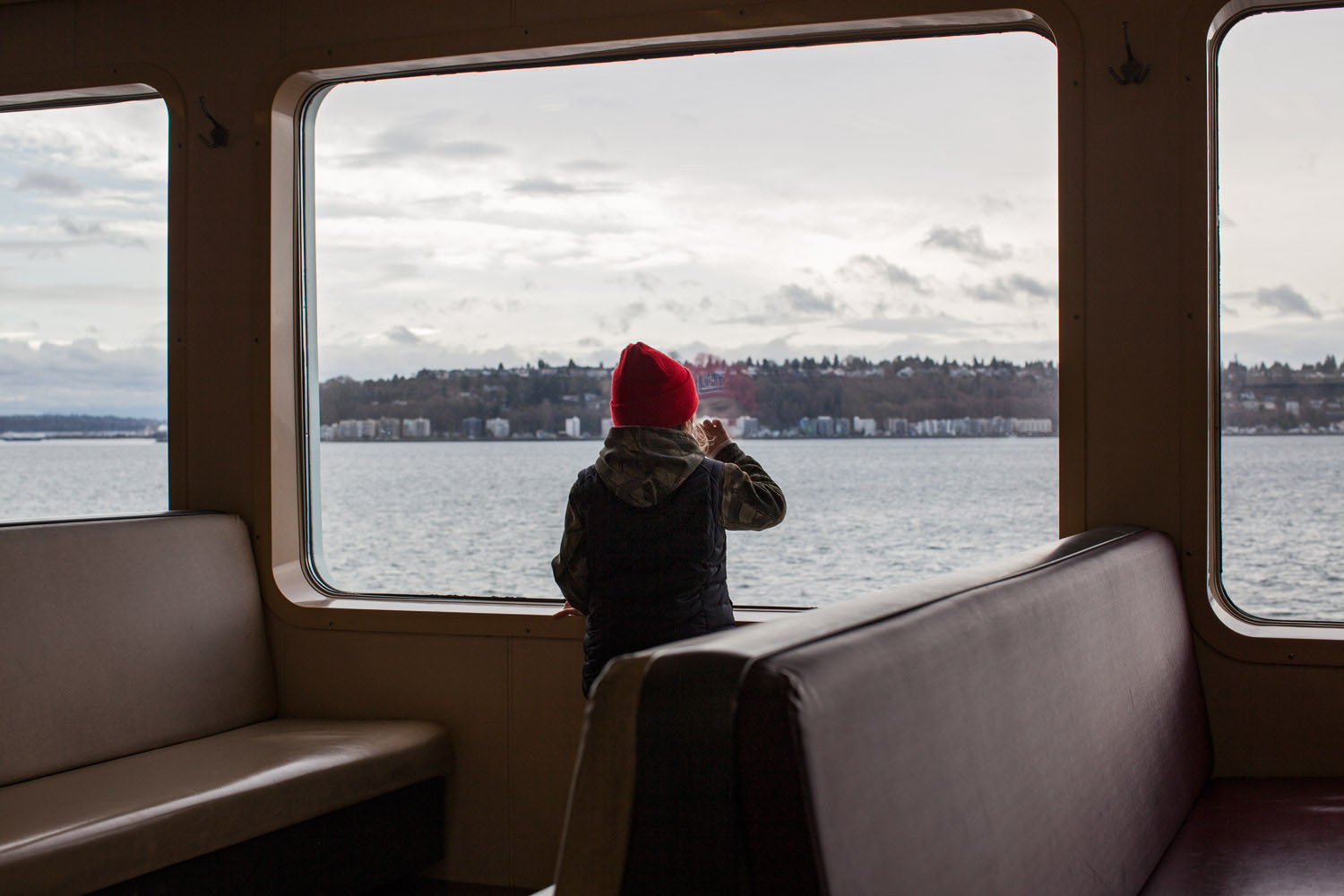
I understand you have two younger girls who are too young to join you on these adventures. Are they eager to join in? Do you worry about how the dynamic will change between you and Clover when they are old enough to tag a long? I imagine it’s been a great bonding experience for you and Clover. Maybe you can touch on the bond between you and Clover, too.
I think Poppy, my four-year-old, is very eager to join in because she understands what’s going on. I actually took her on our first 3 person shooting adventure last fall. It didn’t go all that well. I think she is still too small to really endure the hiking in the woods. She got tired really fast. With that said, I’m really excited about the next phase of this project. Including the two little kids into the mix is something that Clover and I are waiting for. Clover often says she can’t wait to teach her sisters all the amazing things that nature has to show them. The bond that Clover and I have is undoubtedly partially due to our experiences together on the road. In fact the introduction to my book is a letter to Clover from me chronicling how I feel about our experience on the road. And the conclusion to the book is a letter from Clover to me. The letters are my favorite part of the book. Even more so than the photographs.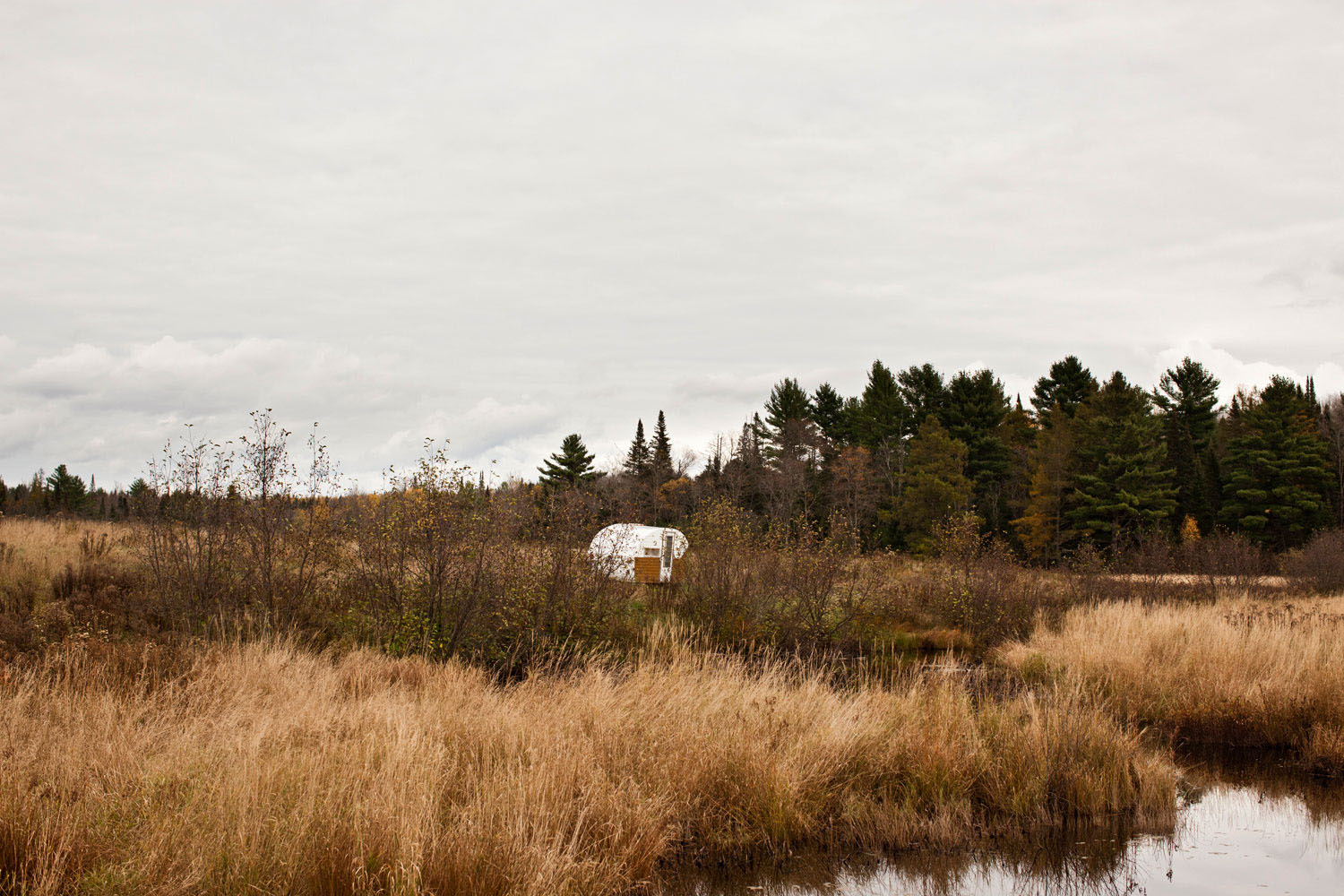 How does your wife feel about these adventures? Does she ever want to tag along? How do you think these trips would change if they involved the whole family?
How does your wife feel about these adventures? Does she ever want to tag along? How do you think these trips would change if they involved the whole family?
My wife loves that I take the girls out on the shooting adventures to document the process. She doesn’t feel left out because we spend a lot of family time out in the wild as well. But she knows when I take the girls on a road trip to shoot for the series that it’s work and not all fun. She respects the difference and can totally appreciate it. I feel so lucky to have a partner that encourages and supports my artistic practice.
My motherly instinct is very attracted to the Free Range kids movement, which – in short – is about trusting our children to do more for themselves and allowing them independence. I feel like what you are doing is very in-line with this kind of parenting. Would you agree?
I totally agree. I think we need to let our children be as independent as possible and learn things from experience. I’m a big fan of nature play and free range parenting.
You’re raising three girls. What are the more important lessons you want them to take away from life?
To be kind, patient and understanding, to love the earth and each other, and to be confident and strong.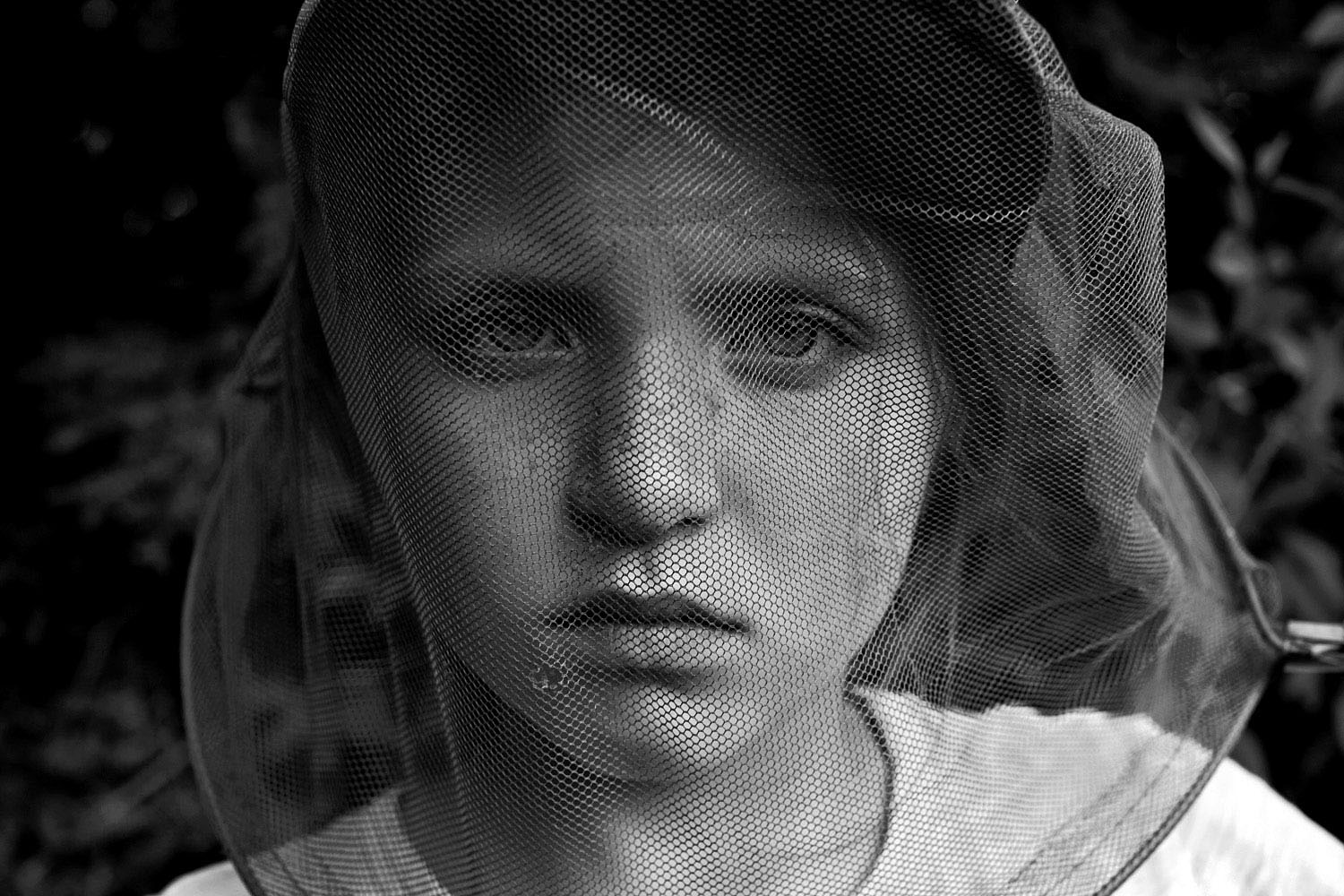
How would Clover describe these trips? Are there ever times she doesn’t want to go or is it something she always looks forward to?
I believe Clover would describe the trips very much like I do. She looks forward to them as a getaway, a vacation of sorts. She looks forward to the opportunity to spend time alone with dad and go out into the world and explore these amazing locations. The kid has seen more amazing things and done more amazing things than I have and she’s only 9.
Curious how long a typical trip is and how you work around school. Are you okay with her missing a few days of school for the sake of learning outdoors?
Usually the road trips last between three and five days. We try to take them when there’s a break from school, but I am okay with her missing a day or two for the sake of this. I think she learns a lot out in the woods in a different way than she could ever learn in school. Different things but equally important.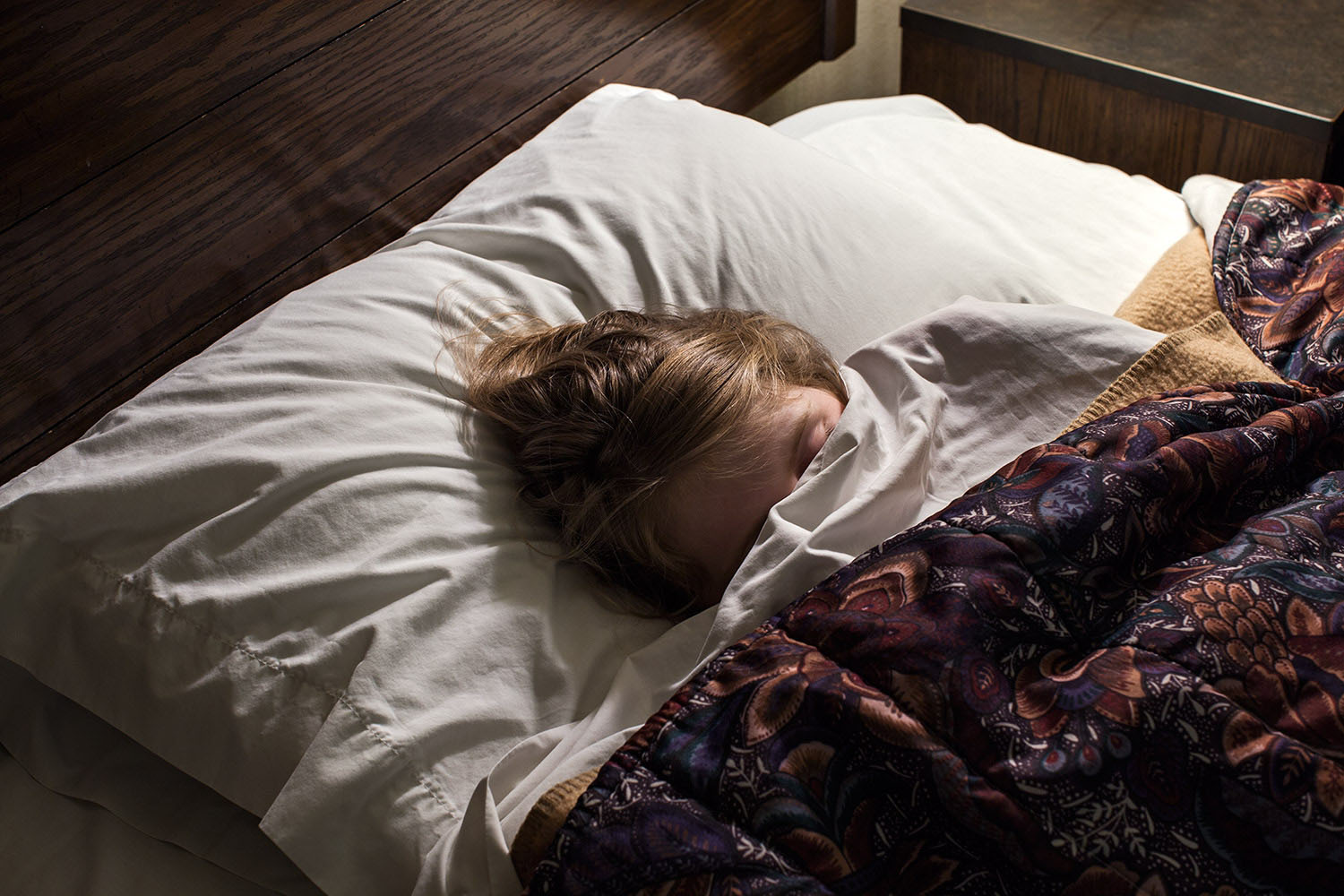
I love the images of Clover in the hotel rooms. Can you touch on what those images represent and why they’re included in the series?
The sleeping images are meant to represent a resting point, both literally and metaphorically, in the bigger adventures. They serve the more precious end of the scale. She is tired and vulnerable and I see that working with the wild child you see in the other images. They are meant to also serve as moments of pause in the book, moments of reflection on what we encounter that day and what may come tomorrow. They are spread out across the book like a backbone. In fact the first and last picture you see are her asleep. This is meant to give the viewer the experience that possibly the entire book is a dream. The sleeping images came into play one night when we were back at our hotel and I decided to take some pictures of Clover sleeping because the stripes on her shirt looked amazing against the stripes of the sheets. When I woke up in the morning she said she had been dreaming of salamanders, that we were out in the woods and she was catching them. Later on that day our plans got sidetracked and we ended up parking in some random spot and hiking into the middle of nowhere. We stumbled upon this stream where Clover found tons of salamanders and ended up catching them and playing. The dream acted as a premonition in some way to the day that was about to come. I took that as a special sign to continue to photograph her sleeping. In fact, I photograph her sleeping every night now when we’re in the hotels. I started to take pictures of the two girls sleeping together on the two most recent trips.
Where has this project taken you?
We spend a lot of time in New England, Vermont, Maine, Rhode Island, Massachusetts. We spent some time in North Carolina, Virginia, lots of time in the northwest corner, the Olympic national Park in Washington state. We’ve also been out to the desert of Arizona and the coast of Eastern Canada.
I notice the bloody nose and the broken arm. Do share.
There are images scattered throughout the project and book. They are meant to act as gut punches. Images that make you feel an immediate emotional reaction to the physicality of being young and fragile. These images often come in the form of injury. Clover had eye surgery when she was three, a broken wrist at summer camp when she was six, and a basic bloody nose. These images are meant to allow the viewer to feel the vulnerable and precious side.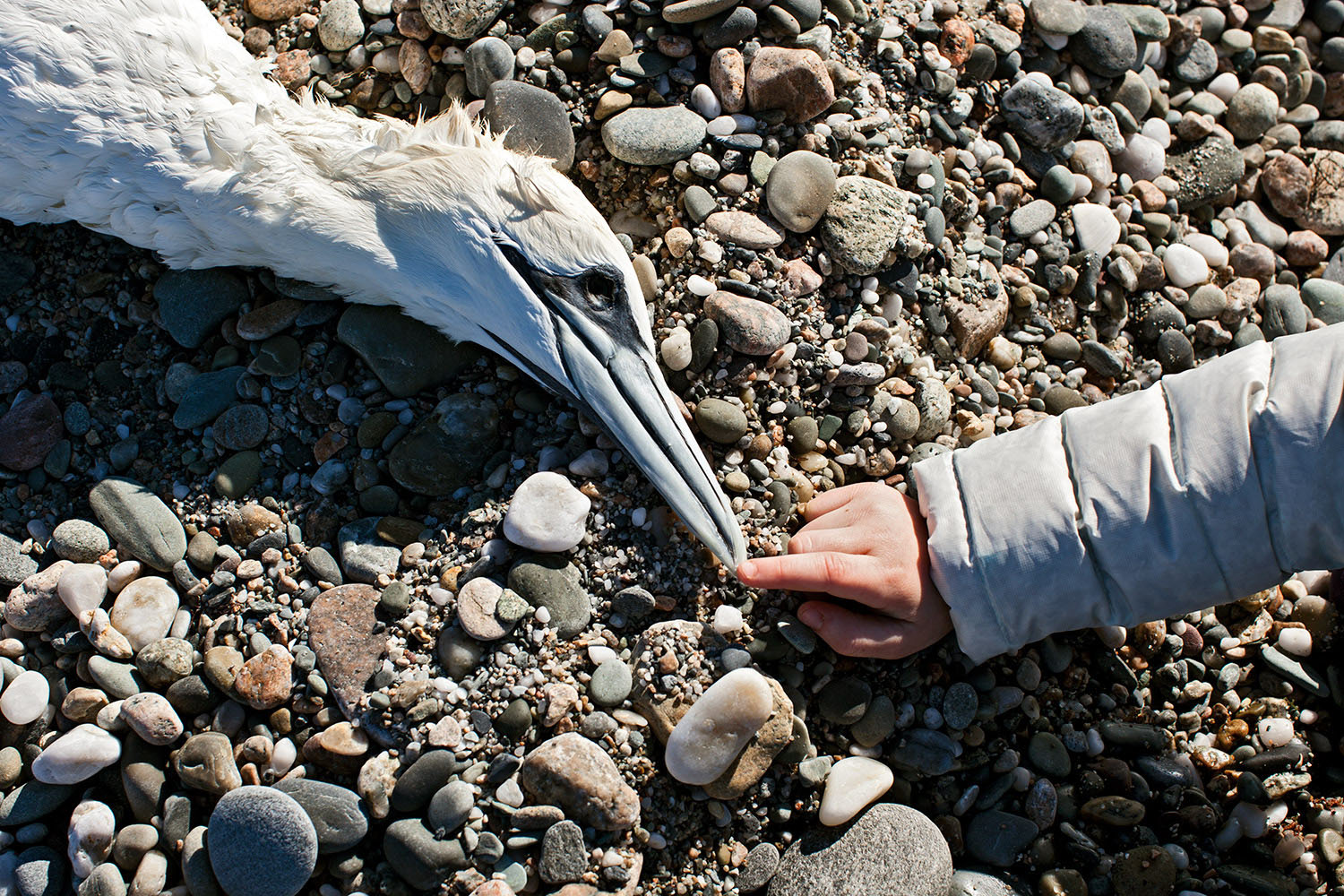
Tell us about all the dead animals and why you feel drawn to capture them.
I think the animals in Wild & Precious act as supporting characters in the play. We often desire to be connected to the creatures we encounter but it’s impossible because of their fear of humans. So oftentimes the only way we get to touch them and be physical with them is when they’re dead. My children have overcome the fear of dead animals. It’s not strange to touch a dead animal but rather a way of experiencing a deeper connection with the animal world. On a side note, death is so closely related to sleeping that the animals also appear to be sleeping in the pictures, which mimics the sleeping of Clover. There’s also a notion of masking throughout the series where faces are secured, both animal and human.
The feel of your photos remind me some of Sally Mann, who is one of my favorite photographers. Can you discuss some photographers that have influenced you over the years?
Sally Mann and Wynn Bullock have served as endless inspiration for me. The way that they capture portraiture and it’s relationship to the landscape is absent particularly when Bullock’s images of his daughters at the beach and in the woods.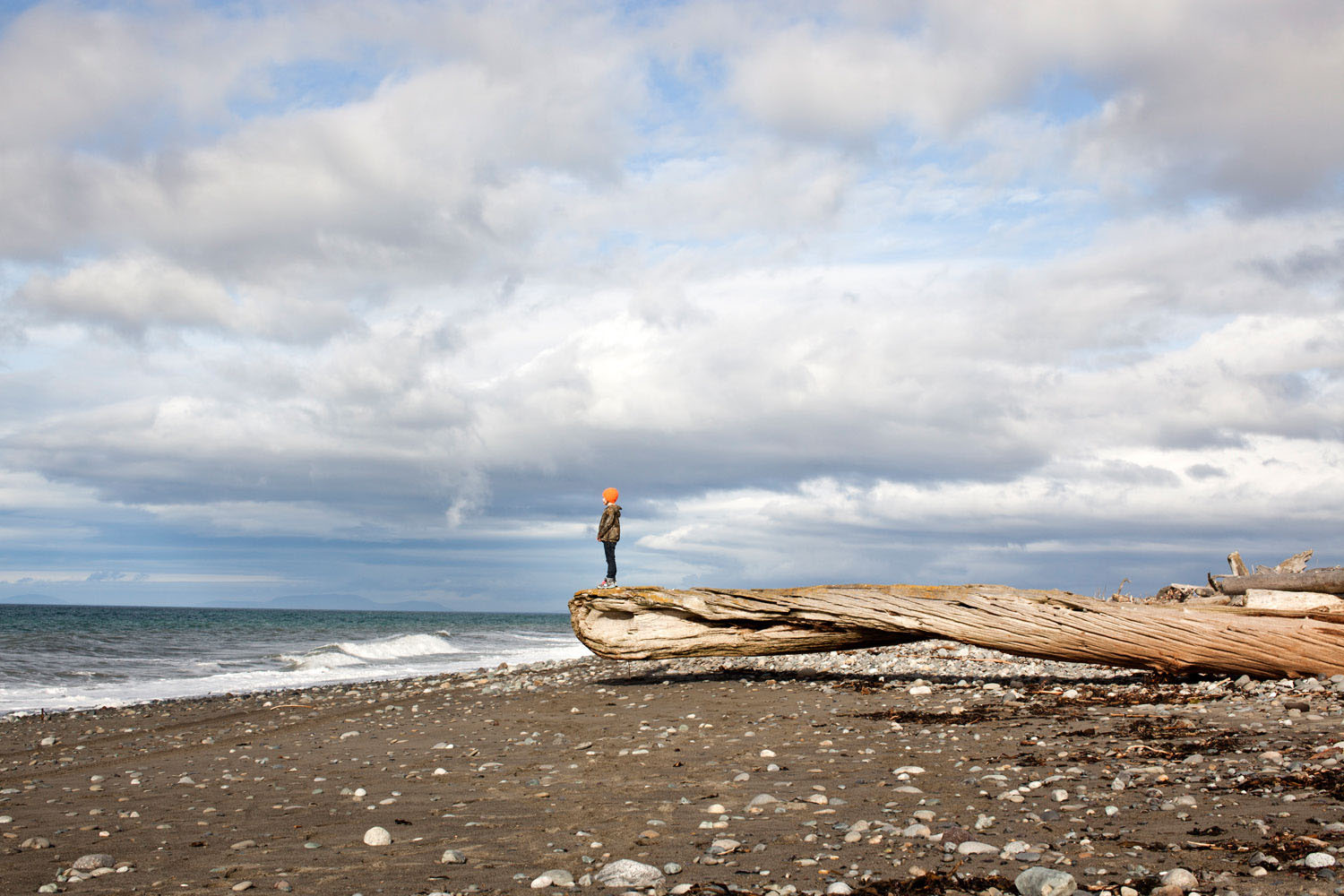
What do you think is the most important lesson Clover has learned since you started this project?
I think the most important lesson she could have learned from any of our adventures is to be courageous and confident. She does things and acts in ways that often make me feel very proud to have helped her acquire such secure grasp on who she is and what she’s capable of.
How about an important lesson you, yourself, have learned?
One of the most important lessons I’ve ever learned in my life came on these roads trips. Clover taught me to let go of being in control and to collaborate with her. To have confidence in her abilities and to see her as a partner and to not be such a dictator. I have a tendency to be a bit of an overlord when it comes to producing my photographs. She showed me that the best opportunities come from working together and experiencing the moment not as a dictator with the subject but as a teacher and a student where the relationship is reciprocal. I’m stubborn, it took me many frustrating experiences to get to the point where I am today. But I thank her for that, because in the end it’s what makes the images more unique and special.
Your project is going to be released as a book, which is awesome. Can you tell us a bit about what that journey has been like? When will the book be released and where can we find it?
Yes, the book will be released this fall to coincide with a solo show at my gallery in New York, ClampArt. The book is being published by Daylight Books. It’s been an amazing partnership and experience to bring this book and project to life. Creating the book, editing the pictures, talking about the ideas with essayists, have all brought the project full circle and into much more clarity in my mind. Sequencing the images in the book has also helped me establish relationships between pictures that I never thought possible. It’s a precursor to how the exhibition will look and feel in the gallery space.
As for where you can get the book, I will be setting up a pre-sale website. So stay tuned for that. You’ll be able to buy the books directly from me and also some goodies that come along with the book. We’re in the progress of creating objects and items that will be Wild & Precious affiliated that will be for sale on our website. Things such as hats, stickers and other things. This part of the project is really fun for us.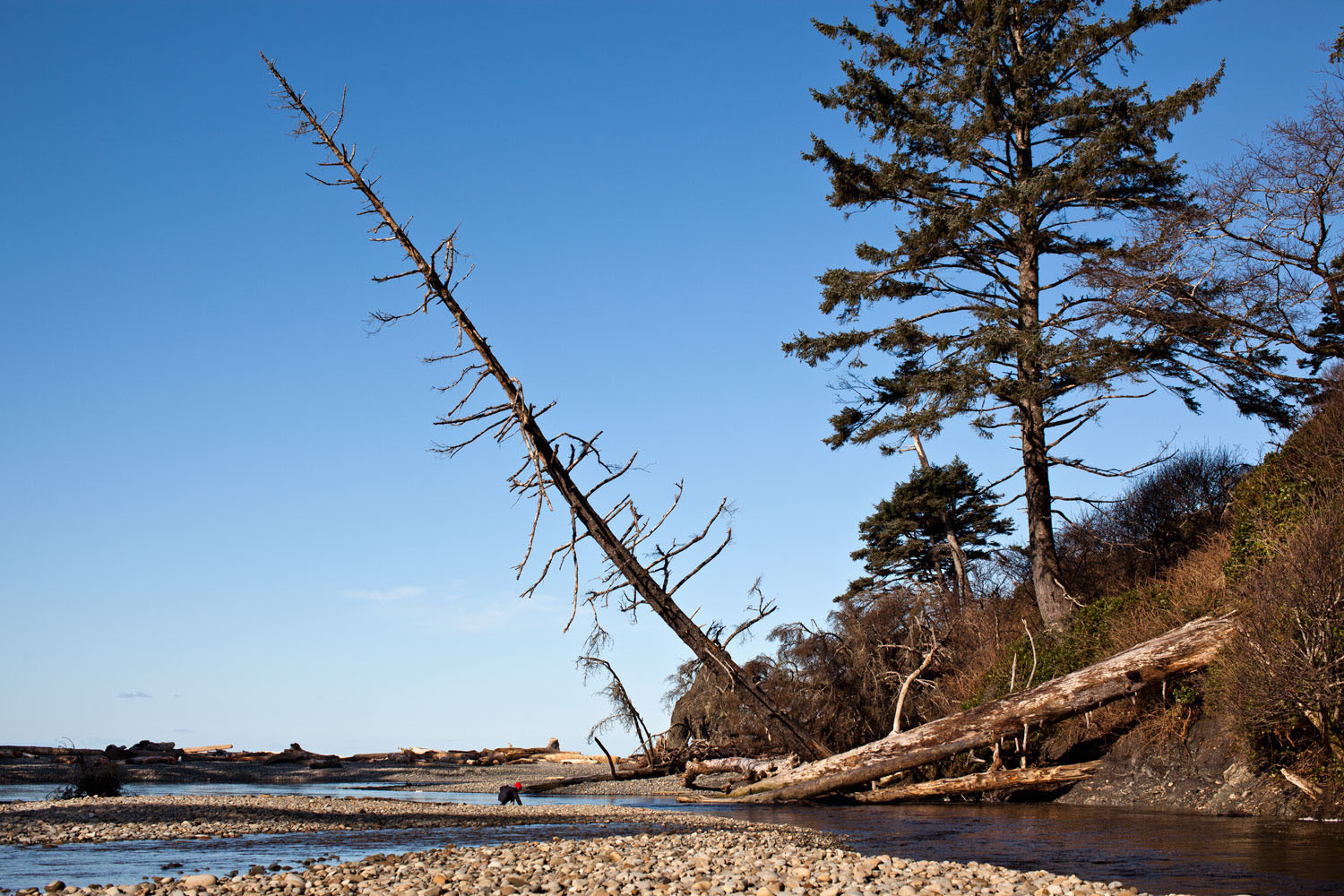
Will the book contain any images from your instagram feed? Would love to hear your general thoughts in regards to mobile documentation.
Ah yes, one of my favorite parts of the project has been shooting with my phone in addition to my camera. I approach photography in a very different way with my phone so incorporating the images from my Instagram feed and iPhone into the project was an amazing opportunity to bring two seemingly disparate worlds together. The work is all created at the same time from the and the same mindset so it only made sense that they were family and live together in the book and exhibition. I’m really excited about this because I feel that the Instagram images are much looser and more fun in someways to my formally composed camera pictures. I can’t wait for people to see this book and experience the adventures we go on and hopefully be inspired to take their own adventures. It’s a wild and amazing world out there and we as parents need to make sure our children are aware of just how magical it is.
Speaking of mobile documentation, Jesse is moderating the Childhood Unplugged Instagram feed this week. Hop on over to say hello and check out his features. Thanks for your time, Jesse, and best of luck with Wild & Precious.
